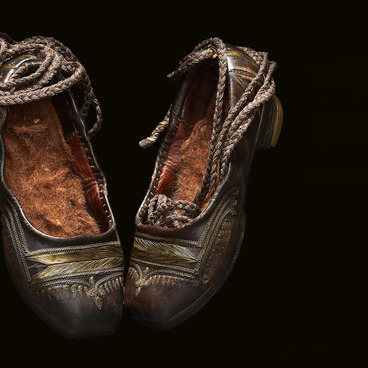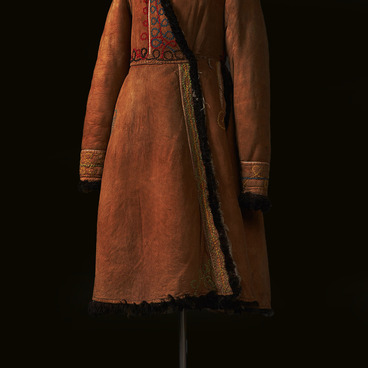A bed skirt, along with pillows, featherbeds and blankets, was part of the bride’s dowry and originally served as a decoration for the wedding bed. Over time, it became an essential element of the interior in well-to-do peasant, bourgeois and merchant houses, a proof of family affluence.
A bed skirt was a wide, straight or ruffled decorative trim, which was attached to the edge of the sheet on the front side and descended almost to the floor. Because of the abundance of decorative elements such as embroidery, weaving, inserts of silk ribbons and lace, it was not washed unless it was absolutely necessary.
The level of decorative details depended on the bride’s imagination and skill, or on the skills of the craftswomen who were commissioned to make the dowry, most often in convents. Archaic motifs associated with the idea of life continuation were used to decorate the nuptial bed: images of birds, deer, horses, the tree of life, and lions (“leopards-protectors”); vegetal designs and female figurines symbolized the idea of fertility. Later they began to depict scenes of festivities, images of the bride and groom, ladies and their suitors, scenes of hunting or crossing water on a ship, the image of a magical space with fantastic trees and flowers, mythical animals and birds.
Embroidery techniques for decorating bed skirts were varied: openwork, counted-thread satin stitch, oblique cross, chain-stitch, cutwork embroidery, as well as painting. Embroidery was often done with white threads on a white blank or openwork background — in the form of a net. Red threads were also common in creating a pattern. In a later technique chain stitch embroidery was often done with multicolored threads of many different shades.
In the olden days, people would sleep on benches, plank beds, chests, ovens, or stove benches; beds appeared in later times, and they were made tall, up to a meter above the floor. Besides, it was convenient to store various boxes and baskets with household utensils under the high bed. Thus, the bed skirt fulfilled several functions: it covered the belongings folded under the bed, and served as an ornament and a talisman.

